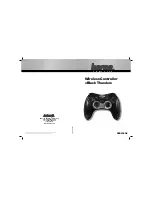
Chapter 3
Hardware Overview
3-6
ni.com
Motion Resources
Encoder and motion I/O resources that are not used by an axis are available
for non-axis or non-motion-specific applications.
If an encoder resource is not needed for axis control, you can use it for any
number of other functions, including position or velocity monitoring, as a
digital potentiometer encoder input, or as a master encoder input for
master/slave (electronic gearing) applications.
Each axis also has an associated forward and reverse limit input, a home
input, inhibit (alarm) input and in-position input, a high-speed capture
trigger (position capture) input, and a breakpoint (position compare)
output. Each axis also has a configurable drive (servo) ready input, inhibit
output, and alarm clear output. One shutdown input for the controller is also
available. These signals can be used for general-purpose digital I/O when
they are not being used for their motion-specific purpose.
Note
When a resource is mapped to an axis, all features and functions of the resource are
available as part of the axis. Because resources are referenced by axis number after they
are assigned to that axis, it is not necessary to remember or use the resource number
directly when accessing these features.
Host Communications
The host computer communicates with the controller through a number
of memory port addresses on the host PCI bus.
The primary bidirectional data transfer port supports FIFO data passing
in both send and readback directions. The PCI-7390 controller has both a
command buffer for incoming commands and a return data buffer for
returning data.
The communications status register provides bits for communications
handshaking as well as real-time error reporting and general status
feedback to the host PC. The move complete status register provides
instantaneous motion status of all axes.
















































